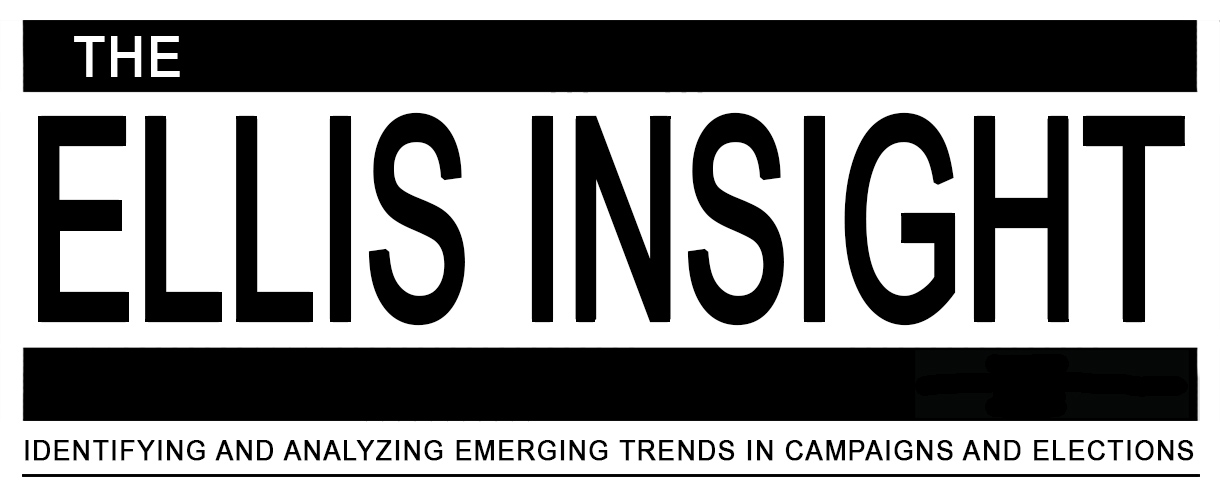By Jim Ellis — Friday, May 10, 2024
Senate
Maryland: Shock Poll Just Released — A surprising poll was just released from Emerson College (May 6-8; 1,115 registered Maryland voters; 462 likely Maryland Democratic primary voters; multiple sampling techniques) that shows Prince George’s County Executive Angela Alsobrooks for the first time moving slightly ahead of US Rep. David Trone (D-Potomac). The results yield a 42-41 percent count despite Alsobrooks being outspent by an almost 10:1 ratio. This data clearly suggests that the upcoming May 14 Democratic primary election will yield an interesting night.The general election data is surprising, too. After several earlier polls projected former Republican Gov. Larry Hogan (R) holding leads over his Democratic opponents, this survey posts both Alsobrooks and Trone to nine (46-37 percent) and 10-point (48-38 percent) respective leads over the ex-state chief executive.
West Virginia: Justice Crushing Mooney in Latest GOP Poll — With a week to go before the May 14 West Virginia primary, Research America conducted another GOP US Senate survey (April 24-May 1; 407 likely West Virginia Republican primary voters; live interview & online) and publicly released the results. The data finds Gov. Jim Justice leading US Rep. Alex Mooney (R-Charles Town) by a huge 67-23 percent tally. Gov. Justice is expected to win the Republican nomination next week and the Senate seat in November.
House
KY-4: AIPAC’s Early Attack Strategy — The American Israel Public Affairs Committee (AIPAC) announced that they are launching an ad blitz against Kentucky US Rep. Thomas Massie (R-Garrison) even though he has little competition in the May 21 Republican primary and has no Democratic opposition for November. The ads will attack him for his record pertaining to Israel support.
AIPAC’s goal is to weaken him within the Republican primary voter base in order to either dissuade him from running for the Senate when Mitch McConnell’s seat comes open in 2026 or make him less of a factor if he does launch a statewide candidacy.
MD-6: Dueling Polls — A new publicly released survey posts former Commerce Department official April McClain Delaney (D) leading the large field of 13 Democratic candidates vying to succeed Rep. David Trone (D-Potomac) who is running for the Senate. The primary election is this Tuesday.
The Garin-Hart-Yang Research Group conducted the survey for the Delaney campaign. The poll (May 6-7; 400 likely MD-6 Democratic primary voters; live interview) finds Delaney topping state Delegate Joe Vogel (D-Montgomery County) by a 37-24 percent margin. The pollsters indicate that the remaining 11 candidates combined only posted a cumulative 17 percent support factor.
There is a wide discrepancy in the polls, however. Recently, Vogel released a Public Policy Polling survey (April 25-26; 588 likely MD-6 voters; live interview & text) that showed both he and McClain Delaney at 24 percent. While the data results are very different, it is clear that the primary contest has winnowed to a two-way race.
NJ-10: Special Scheduled; Candidates Come Forth — Gov. Phil Murphy (D) has called a special election to replace the late Rep. Donald Payne, Jr. (D-Newark) who passed away on April 24. The special primary will be held on July 16, with the special general on Sept. 18. The winner will take the seat in late September and then be on the ballot for the regular term on Nov. 5.
Because Rep. Payne passed away after the candidate filing deadline, the local Democratic Party organizations will choose a replacement nominee after the July 16 special primary for the regular term. It is presumed the delegates will choose the special primary winner, and Newark City Council President LaMonica McIver (D) appears to be the candidate consolidating the earliest support.
Also expressing interest in running for the party nomination are Hudson County Commissioner Jerry Walker, Linden Mayor Derek Armstead, East Orange City Councilwoman Brittany Claybrooks, and New Jersey state official David Godfrey. Republican Carmen Bucco and Green Party candidate Jon Serrano, along with Congressman Payne, were the only candidates to file at the March 25 filing deadline.
The Democrats will easily retain the Newark anchored 10th District. The FiveThirtyEight data organization rates the seat as D+58, and President Joe Biden scored an 81-19 percent victory here in 2020.
Governor
West Virginia: Polling Tight as Primary Nears — As the West Virginia open gubernatorial candidates head into the last week of campaigning before the primary election next Tuesday, a new Emerson College survey (May 2-5; 558 likely West Virginia Republican primary voters; multiple sampling techniques) continues to see Attorney General Patrick Morrisey leading the GOP primary race, but his edge is narrowing as the whole field is becoming bunched.
The Emerson results reveal a 33-29-21-15 percent split among AG Morrisey, former state Delegate Moore Capito, businessman Chris Miller, and Secretary of State Mac Warner, respectively. Next’s week primary winner will become the prohibitive favorite to succeed Gov. Jim Justice (R) who will likely be nominated for the US Senate in the same election. The erratic polling in the past few weeks in this race suggests we could be headed for a very close final result on election night.






